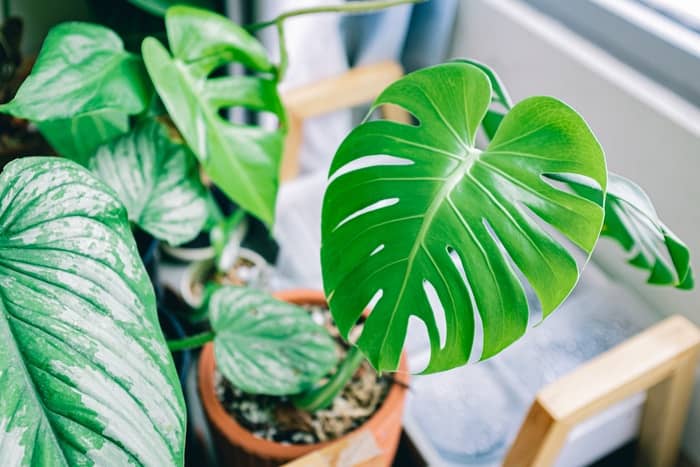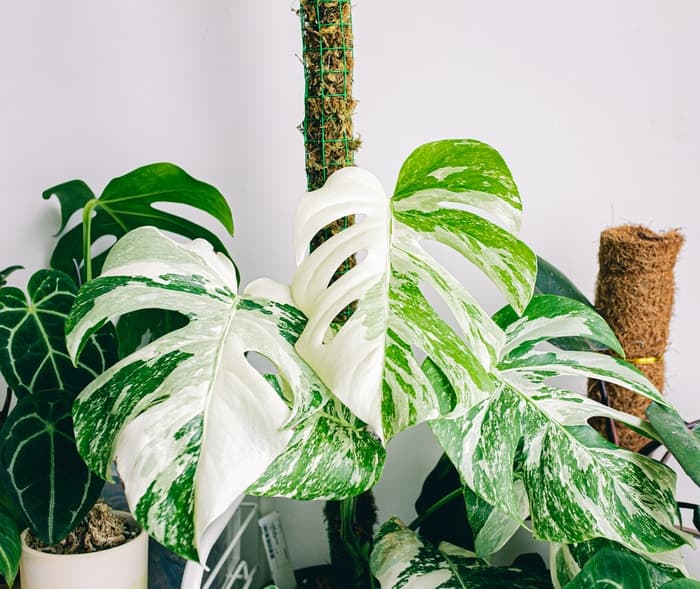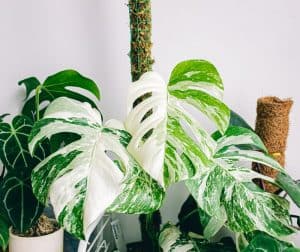Monsteras are well-loved for being low maintenance, abundant growers, and just downright pretty. These plants commonly grow fast when they get all the care they need. This means you will be getting expanding foliage and aerial roots before you know it. If your plants are on the brink of going wild, it is important to learn how to stake a Monstera before it turns your home into a jungle.

Why Stake a Monstera?
Supporting the posture of your Monstera with a moss poll or stake offers several advantages. Monsteras thriving in their native habitats are considered epiphytes. It means that these plants grow in nature vertically by climbing on the surrounding plants. These beauties get by thanks to their plant friends.
Keeping up with this epiphytic behavior might be tougher if your Monsteras are potted at home. The good news is that stakes can serve as the ideal dupe for other greenery. The Monstera will cling to the stake, grow upward, and hold the heaviest stems straight, forming a pleasing posture to make it look its best.
Monstera plants grow aerial roots, too. However, you might want to avoid cutting them. The purpose of these roots is to support the heavy base of your plant. When you stake your plant, it will help free the roots from some of the load, letting you tuck them under the soil of your Monstera where they can rest unseen.
When Is It Time to Stake Your Monstera?
More often than not, Monstera plants for sale are immature small plants that don’t need any support for growing straight up. However, given the right conditions, these plants can grow 1 to 2 feet a year, which means that you might need to offer support to your plant sooner than you think. If you will buy a bigger plant, it might already include a pole.
Since Monsteras tend to grow very fast and acquire lots of weight above the plant, they tend to become unruly or unbalanced. You will want to offer some kind of support the moment your Monstera starts showing all or some of the signs below, although support can also be provided earlier if you like:
- Aerial roots start to appear.
- New growth develops horizontally instead of vertically.
- Stems arch or bend.
- You plan to repot your Monstera soon.
How Do You Stake a Monstera?
When you stake your Monstera plant, it will offer support for the plant’s weight and offer it a means to climb. You can support your Monstera using a wood slab, a pole covered in moss, or a jute-wrapped wooden stake.
No matter what you choose out of these options, the steps on how to stake a Monstera are just the same.

Determine the Height of Stake You Will Use
To estimate the correct height of the stake for your Monstera, add the height of the plant and the depth of the pot. Add 12 inches to the sum to give enough room for the further growth of your plant.
Insert One Tip of The Pole Into the Soil at The Back of The Plant
Place the pole so that it will rest between the rim of the plant pot and your Monstera. See to it that the stake will reach down to the very bottom of the pot. It will offer support for the pole and ensure that it doesn’t topple under your Monstera plant’s weight.
Firm the Soil Surrounding the Pole
This next step is important because failing to firm the soil surrounding the stake will only make the stake unbalanced, prone to tipping over or wiggling under the plant’s weight. For this reason, it is a must that you secure the pole right in place.
Stretch the Vines Carefully Upward Against the Staked Pole
Be gentle to avoid damaging the roots or vines as you stretch the vines upward.
Tie the Plant’s Vines to The Pole
Proceed to tie every vine in different locations using soft fabric or plant ties. Make sure that these are loose enough and space out each tie at 5 to 6 inches. It is perfectly fine if the ties affect the plant’s beauty for now.
New foliage will hide these ties as your Monstera grows. You can just get rid of some ties after the aerial roots of your plant get a solid grasp on the stake and offer your plant natural support.
Guide the Aerial Roots of The Plant to The Pole
Aerial roots in the wild serve an important role in clinging to the rough bark to allow your plant to climb. Eventually, these aerial roots will be the ones to grasp and hold onto the jute or moss pole to support the journey of your Monstera up the pole. If you guide the aerial roots up the pole, they can get a better grasp of the moss.
How to Stake a Mini Monstera
Monstera plants are usually big, growing to take up lots of attention and space. However, you can also find mini variants. As far as looks and shape are concerned, mini Monsteras resemble the plant’s popular version scientifically called Monstera Deliciosa.
What makes them different is that Mini Monsteras don’t grow large horizontally, with smaller leaves in comparison. Since Mini Monstera plants don’t spread too wide, they tend to reach the sky at the speed of lightning. This means that you need to stake your Mini Monstera early on.
If you don’t provide your Mini Monstera with solid support right from the beginning, it will soon drop dramatically. The process of staking Mini Monstera is just the same as that of regular Monstera. All you have to do is cut your stake of choice for the specific want that you want your Mini Monstera to reach.
Why Doesn’t My Monstera Have Aerial Roots
Monsteras are a genus of tropical plants that are best known for their large, split leaves. While most monsteras will grow aerial roots in nature, it’s not uncommon for them to fail to do so when grown as houseplants. There are several reasons why your monstera might not be growing aerial roots.
The most common reason is that the plant is not getting enough light. Monsteras need bright, indirect light to grow properly. If your plant is in a dark corner of the room, it’s not going to be able to produce aerial roots.
Another reason your plant might not be growing aerial roots is if the soil is too wet or too dry. Monsteras like moist, but well-drained soil. If the soil is too wet, the plant will drown and won’t be able to produce aerial roots.
Lastly, if your monstera isn’t growing aerial roots, it may be because it’s still too young. Monsteras typically start aerial rooting around 6 months old. If your plant is younger than that, don’t worry – it will start rooting soon enough. Just make sure to give it plenty of water and humidity.
Conclusion
Now that you know how to stake a Monstera, you will feel more confident about growing these plants. Have fun watching your beloved Monstera thrive beautifully and healthily as it grows up the stake.









